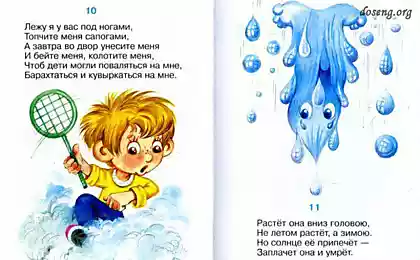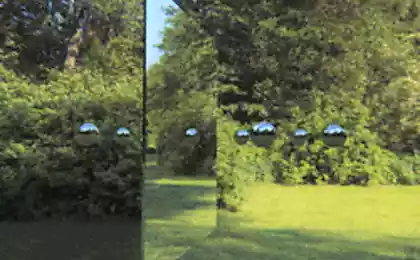927
What is the light?
It's all around us and allows us to see the world. But ask any of us and most will not be able to explain what actually this light. Light helps us to understand the world in which we live. Our language reflects this: in the darkness we move to the touch, the light we begin to see with the dawn. And yet we are far from fully understanding light. If you bring a ray of light, what's in it? Yes, light moves incredibly fast, but is it cannot be used for travel? And so on and so forth.
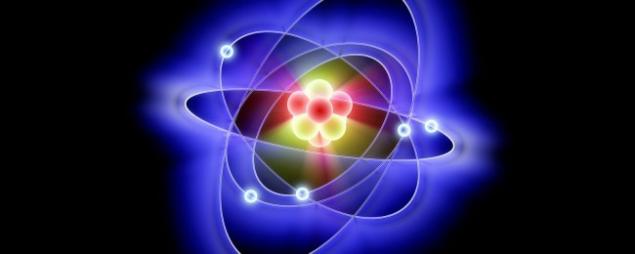
Of course, everything should be wrong. The light puzzled the best minds for centuries, but the significant discoveries made over the last 150 years, has gradually opened the curtain on this mystery. Now we more or less understand what she is.
Physics of our time not only to comprehend the nature of light, but trying to control it with unprecedented precision — and it means that light will very soon be made to work in the most amazing way. For this reason the United Nations declared 2015 International year of Light.
Light can be described in various ways. But you should start with this: light is a form of radiation (radiation). And this comparison makes sense. We know that excess sunlight can cause skin cancer. We also know that radiation exposure can cause the risk of developing certain forms of cancer; it is not difficult to draw Parallels.

But not all forms of radiation are the same. In the late 19th century, scientists were able to determine the exact essence of light. And what is most strange, this revelation came not in the process light, and emerged from decades of work on the nature of electricity and magnetism.
Electricity and magnetism seem very different things. But scientists like Hans Christian Oersted and Michael Faraday found that those deeply intertwined. Oersted discovered that an electric current flowing through a wire deflects the needle of a magnetic compass. Meanwhile, Faraday discovered that moving a magnet near a wire can generate an electric current in the wire.
Mathematicians of that day used these observations to create a theory describing this strange new phenomenon, which they called "electromagnetism". But James Clerk Maxwell was able to describe the full picture.
Maxwell's contribution to science is difficult to overestimate. Albert Einstein, who was inspired by Maxwell said that he changed the world forever. Among other things, his calculations helped us understand what light is.

Maxwell showed that electric and magnetic fields travel as waves, and these waves move at the speed of light. This allowed Maxwell to predict that light itself is transferred by electromagnetic waves and this means that light is a form of electromagnetic radiation.
In the late 1880s, a few years after the death of Maxwell, the German physicist Heinrich Hertz was the first to formally demonstrate that the theoretical concept of electromagnetic waves Maxwell was correct.
"I'm sure that if Maxwell and Hertz lived in the era of the Nobel prize, they would certainly have received one," says Graham Hall of the University of Aberdeen in the UK where he worked for Maxwell in the late 1850s.
Maxwell took a place in the annals of the science of light at another, more practical reason. In 1861 he published the first stable color photograph obtained with the use of three-color filter, which laid the Foundation for many forms of color photography today.
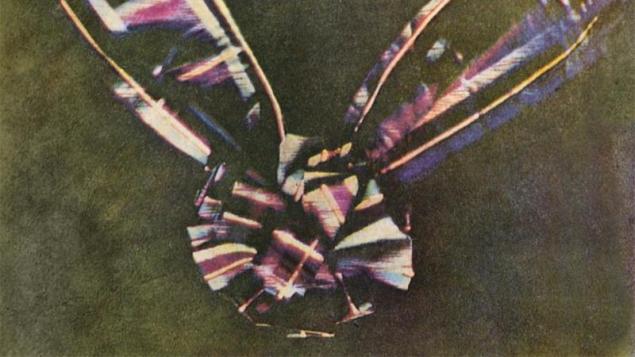
The phrase itself that light is a form of electromagnetic radiation, not much can be said. But it helps to describe what we all know: light is a spectrum of colors. This observation goes back to the works of Isaac Newton. We see the color spectrum in all its glory, when the rainbow rises in the sky and these colors are directly related to Maxwell's concept of electromagnetic waves.
A red light on one end of the rainbow is an electromagnetic radiation with a wavelength from 620 to 750 nanometers; purple color at the other end of the radiation with a wavelength from 380 nm to 450 nm. But electromagnetic radiation is more than visible color. Light with wavelength longer than red we call infrared. Light with wavelength shorter than violet is called ultraviolet. Many animals can see in UV, some people also says Eleftherios Hallmates from the Institute of quantum optics max Planck in Garching, Germany. In some cases, people see even infrared. Perhaps that is why we are not surprised that ultraviolet and infrared we call forms of light.
It is curious, however, that if the wavelengths become shorter or longer, we cease to call them "light". Outside of ultraviolet, electromagnetic waves can be shorter than 100 nm. This is the realm of x-rays and gamma rays. Have you ever heard of x-rays called a form of light?

"The scientist will not say "I am x-raying the object x-ray light." He will say "I use x-rays," says Hallmates.
Meanwhile, beyond infrared and electromagnetic wavelengths are stretched to 1 cm and even up to thousands of kilometers. These electromagnetic waves are called microwaves or radio waves. To some it may seem strange to perceive radio waves as light.
"There is not much physical difference between radio waves and visible light from the point of view of physics, says Hallmates. — You will describe them the same equations and math." Only our everyday perception distinguishes them.
Thus, we get a different definition of light. This is a very narrow range of electromagnetic radiation that can see our eyes. In other words, light is a subjective label that we use only due to the limitations of our senses.
If you need further proof of how subjective our perception of color, remember the rainbow. Most people know that the light spectrum contains seven primary colors: red, orange, yellow, green, blue, Indigo and violet. We even have a convenient Proverbs and sayings about the hunters who want to know the location of the pheasant. Look for a good rainbow and try to discern all seven. It could not even Newton. Scientists suspect that the scientist has divided the rainbow into seven colors because the number "seven" was very important to the ancient world: seven notes, seven days of the week, etc.

Maxwell's work in electromagnetism has led us further and showed that visible light was part of a wider spectrum of radiation. Also began to understand the true nature of light. For centuries scientists have tried to understand what actually is a form of light at a fundamental scale, while moving away from the light source to our eyes.
Some believed that light travels in the form of waves or ripples, through the air or the mysterious "ether". Others thought that this wave model is wrong, and considered a light stream of tiny particles. Newton inclined to the second opinion, especially after a series of experiments which he conducted with light and mirrors.

He realized that rays of light are subject to strict geometric rules. A beam of light reflected in the mirror, behaves like a ball thrown straight in the mirror. The waves do not necessarily move through these predictable straight lines, suggested Newton, so the light needs to travel some form of tiny massless particles.
The problem that was equally convincing evidence that light is a wave. One of the demonstrations that were held in 1801. The double slit experiment of Thomas young, in principle, you can clean the house.
Take a sheet of thick cardboard and carefully make two thin vertical slit. Then take a source of "coherent" light which will emit light of only certain wavelengths: the laser is perfect. Then point the light at the two slits to pass them he fell to another surface.
You expect to see on the second surface of the two bright vertical lines on areas where light passed through the slits. But when Jung conducted the experiment, he saw a sequence of bright and dark lines as the bar code.
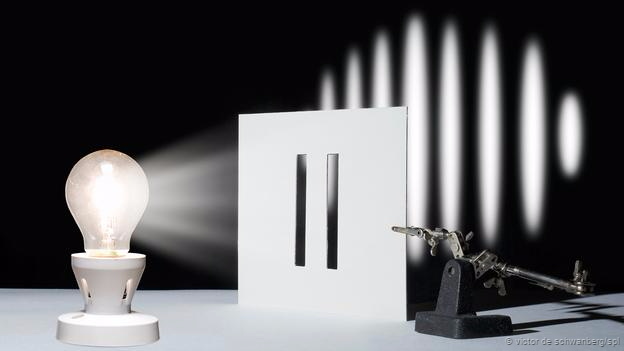
When light passes through slits, it behaves like water waves that pass through a small opening: they are scattered and distributed in the form of a hemispherical ripples.
When this light passes through two slits, each wave extinguishes another, forming dark areas. When the weather fits, it is complemented, forming a bright vertical line. Jung literally experiment confirmed the wave model, so Maxwell put this idea in mathematical solid shape. Light is a wave.

But then came the quantum revolution.
In the second half of the nineteenth century, physicists were trying to figure out how and why some materials absorb and emit electromagnetic radiation better than others. It is worth noting that elektrosetevaya then the industry has evolved, so materials that can emit light, was a serious thing.
By the end of the nineteenth century, scientists have discovered that the amount of electromagnetic radiation emitted by an object varies with its temperature, and measure these changes. But no one knew why. In 1900 Max Planck solved this problem. He found that the calculations can account for these changes, but only if we assume that electromagnetic radiation is transmitted in discrete portions tiny. Planck called them "quantum", the plural of the Latin "quantum". A few years later Einstein took his ideas as a basis and explained another awesome experiment.
Physicists have found that a piece of metal becomes positively charged when it is irradiated with visible or ultraviolet light. This effect was named photovoltaic.
The atoms in a metal lose negatively charged electrons. Apparently, the light is brought enough energy to the metal that he produced some of the electrons. But why the electrons did so, was not clear. They could carry more energy just by changing the color of the light. In particular, the electrons released by the metal, and irradiated with violet light, transferred more energy than the electrons released by the metal irradiated with red light.
If light were just a wave, that would be ridiculous.
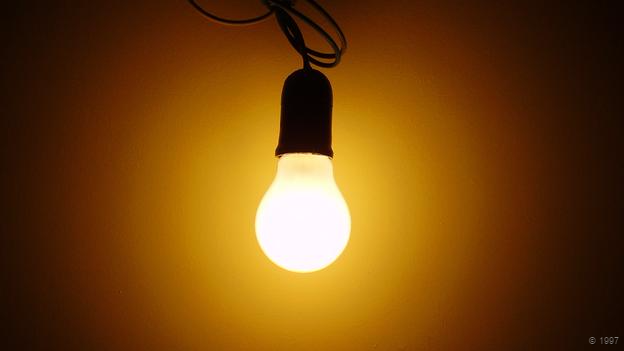
Usually you change the amount of energy in a wave, making it higher — imagine high tsunami destructive force — and not longer or shorter. In a broader sense, the best way to increase the energy of the light transfers the electrons to do a wave of light above: that is, to make the light brighter. The change in wavelength, and therefore light shouldn't carry much of a difference.
Einstein realized that the photoelectric effect is easier to understand if you imagine the light in the terminology of the Planck quanta.
He suggested that the light quantum is transferred tiny portions. Each quantum carries a portion of the discrete energy associated with the wavelength: the shorter the wavelength, the denser energy. This could explain why portions of violet light with relatively short wavelengths carry more energy than the portions of red light with a relatively long length.
Also this would explain why simply increasing the brightness of the light is not particularly affect the result.
Brighter light delivers more light portions to the metal, but it does not change the amount of energy carried by each portion. Roughly speaking, one serving of purple light can transmit more energy to a single electron, than many portions of the red light.
Einstein called these portions of energy photons and currently they are recognized as fundamental particles. Visible light is transferred by photons, other electromagnetic radiation such as x-ray, microwave and radio waves too. In other words, light is a particle.
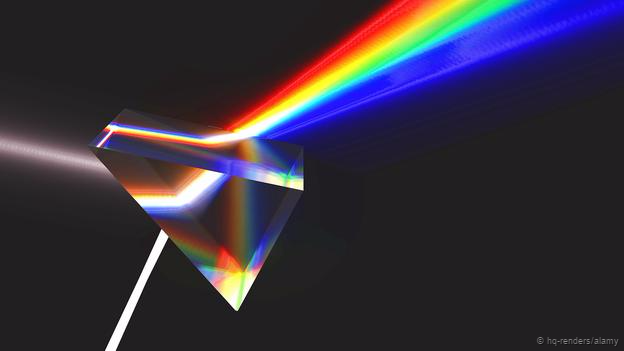
This physics decided to put an end to the debate of what is light. Both models were so convincing that to abandon one made no sense. To the surprise of many neistov, scientists decided that light behaves simultaneously as a particle and as a wave. In other words, light is a paradox.
Thus physicists no problems with a split personality of light. This is to some extent made light doubly useful. Today, based on the work of luminaries in the truest sense of the word — Maxwell and Einstein — we squeeze out all light.
It turns out that the equations used to describe light waves and light particles work equally well, but in some cases one is easier to use than another. Therefore, physics and switch between them, much like we use meters, describing their growth, and go for miles in describing the bike ride.
Some physicists are trying to use light to create encrypted communication channels for money transfers, for example. For them it makes sense to think of light as particles. Blame the weird nature of quantum physics. Two fundamental particles, such as a pair of photons can be "entangled". This means that they will have common properties, regardless of how far are from each other, so they can be used to transmit information between two points on Earth.
Another feature of this entanglement is that the quantum state of photons changes when they read. This means that if someone tries to eavesdrop on an encrypted channel, in theory, he will immediately betray their presence.
Others, like Hallmates, using light in electronics. Them more useful to think of light as a series of waves that can be tamed and controlled. Modern devices called "synthesizer light field" can reduce the light waves in perfect synchronicity with each other. As a result, they create pulses of light that are more intense, short and focused than a regular light bulb.
Over the past 15 years these devices have learned to use for taming light with emergency degree. In 2004, Hallmates and his colleagues have learned to produce incredibly short x-ray pulses. Each pulse lasted for 250 attoseconds, or 250 quintillion seconds.
Using these tiny pulses as the flash of the camera, they were able to take pictures of certain waves of visible light, which oscillate much more slowly. They literally took photos of moving light.
"Since the time of Maxwell we know that light is an oscillating electromagnetic field, but no one even could not think that we can make snapshots of the oscillating light," says Hallmates.
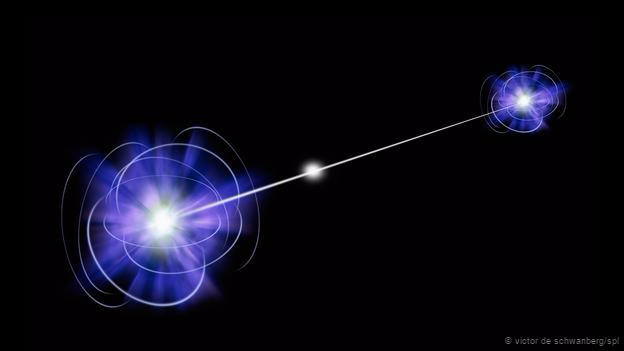
The observation of these separate waves of light was the first step in the direction of the management and change of the lights, he says, just as we change radio waves to transfer radio and television signals.
A hundred years ago the photoelectric effect showed that visible light affects the electrons in the metal. Hallmates says that it should be possible to precisely control the electrons using waves of visible light, modified in such a way to interact with the metal well-defined way. "We can control the light and use it to control the matter," he says.
It can produce a revolution in electronics, lead to a new generation of optical computers, which will be smaller and faster than ours. "We will be able to move the electrons as they please, creating electric currents in solid substances using light, and not as in conventional electronics".
Here is another way to describe light: it is a tool.
However, nothing new. Life used the light ever since, when the first primitive organisms developed light sensitive tissue. People's eyes catch the photons of visible light, we use them to explore the world around them. Modern technologies even further away this idea. In 2014 the Nobel prize in chemistry was awarded to researchers who have built such a powerful light microscope that he was considered physically impossible. It turned out that if you try, the light can show us things that we thought will never see. published
P. S. And remember, only by changing their consumption — together we change the world! ©
Source: hi-news.ru/science/davajte-razberemsya-chto-zhe-takoe-svet.html

Of course, everything should be wrong. The light puzzled the best minds for centuries, but the significant discoveries made over the last 150 years, has gradually opened the curtain on this mystery. Now we more or less understand what she is.
Physics of our time not only to comprehend the nature of light, but trying to control it with unprecedented precision — and it means that light will very soon be made to work in the most amazing way. For this reason the United Nations declared 2015 International year of Light.
Light can be described in various ways. But you should start with this: light is a form of radiation (radiation). And this comparison makes sense. We know that excess sunlight can cause skin cancer. We also know that radiation exposure can cause the risk of developing certain forms of cancer; it is not difficult to draw Parallels.

But not all forms of radiation are the same. In the late 19th century, scientists were able to determine the exact essence of light. And what is most strange, this revelation came not in the process light, and emerged from decades of work on the nature of electricity and magnetism.
Electricity and magnetism seem very different things. But scientists like Hans Christian Oersted and Michael Faraday found that those deeply intertwined. Oersted discovered that an electric current flowing through a wire deflects the needle of a magnetic compass. Meanwhile, Faraday discovered that moving a magnet near a wire can generate an electric current in the wire.
Mathematicians of that day used these observations to create a theory describing this strange new phenomenon, which they called "electromagnetism". But James Clerk Maxwell was able to describe the full picture.
Maxwell's contribution to science is difficult to overestimate. Albert Einstein, who was inspired by Maxwell said that he changed the world forever. Among other things, his calculations helped us understand what light is.

Maxwell showed that electric and magnetic fields travel as waves, and these waves move at the speed of light. This allowed Maxwell to predict that light itself is transferred by electromagnetic waves and this means that light is a form of electromagnetic radiation.
In the late 1880s, a few years after the death of Maxwell, the German physicist Heinrich Hertz was the first to formally demonstrate that the theoretical concept of electromagnetic waves Maxwell was correct.
"I'm sure that if Maxwell and Hertz lived in the era of the Nobel prize, they would certainly have received one," says Graham Hall of the University of Aberdeen in the UK where he worked for Maxwell in the late 1850s.
Maxwell took a place in the annals of the science of light at another, more practical reason. In 1861 he published the first stable color photograph obtained with the use of three-color filter, which laid the Foundation for many forms of color photography today.

The phrase itself that light is a form of electromagnetic radiation, not much can be said. But it helps to describe what we all know: light is a spectrum of colors. This observation goes back to the works of Isaac Newton. We see the color spectrum in all its glory, when the rainbow rises in the sky and these colors are directly related to Maxwell's concept of electromagnetic waves.
A red light on one end of the rainbow is an electromagnetic radiation with a wavelength from 620 to 750 nanometers; purple color at the other end of the radiation with a wavelength from 380 nm to 450 nm. But electromagnetic radiation is more than visible color. Light with wavelength longer than red we call infrared. Light with wavelength shorter than violet is called ultraviolet. Many animals can see in UV, some people also says Eleftherios Hallmates from the Institute of quantum optics max Planck in Garching, Germany. In some cases, people see even infrared. Perhaps that is why we are not surprised that ultraviolet and infrared we call forms of light.
It is curious, however, that if the wavelengths become shorter or longer, we cease to call them "light". Outside of ultraviolet, electromagnetic waves can be shorter than 100 nm. This is the realm of x-rays and gamma rays. Have you ever heard of x-rays called a form of light?

"The scientist will not say "I am x-raying the object x-ray light." He will say "I use x-rays," says Hallmates.
Meanwhile, beyond infrared and electromagnetic wavelengths are stretched to 1 cm and even up to thousands of kilometers. These electromagnetic waves are called microwaves or radio waves. To some it may seem strange to perceive radio waves as light.
"There is not much physical difference between radio waves and visible light from the point of view of physics, says Hallmates. — You will describe them the same equations and math." Only our everyday perception distinguishes them.
Thus, we get a different definition of light. This is a very narrow range of electromagnetic radiation that can see our eyes. In other words, light is a subjective label that we use only due to the limitations of our senses.
If you need further proof of how subjective our perception of color, remember the rainbow. Most people know that the light spectrum contains seven primary colors: red, orange, yellow, green, blue, Indigo and violet. We even have a convenient Proverbs and sayings about the hunters who want to know the location of the pheasant. Look for a good rainbow and try to discern all seven. It could not even Newton. Scientists suspect that the scientist has divided the rainbow into seven colors because the number "seven" was very important to the ancient world: seven notes, seven days of the week, etc.

Maxwell's work in electromagnetism has led us further and showed that visible light was part of a wider spectrum of radiation. Also began to understand the true nature of light. For centuries scientists have tried to understand what actually is a form of light at a fundamental scale, while moving away from the light source to our eyes.
Some believed that light travels in the form of waves or ripples, through the air or the mysterious "ether". Others thought that this wave model is wrong, and considered a light stream of tiny particles. Newton inclined to the second opinion, especially after a series of experiments which he conducted with light and mirrors.

He realized that rays of light are subject to strict geometric rules. A beam of light reflected in the mirror, behaves like a ball thrown straight in the mirror. The waves do not necessarily move through these predictable straight lines, suggested Newton, so the light needs to travel some form of tiny massless particles.
The problem that was equally convincing evidence that light is a wave. One of the demonstrations that were held in 1801. The double slit experiment of Thomas young, in principle, you can clean the house.
Take a sheet of thick cardboard and carefully make two thin vertical slit. Then take a source of "coherent" light which will emit light of only certain wavelengths: the laser is perfect. Then point the light at the two slits to pass them he fell to another surface.
You expect to see on the second surface of the two bright vertical lines on areas where light passed through the slits. But when Jung conducted the experiment, he saw a sequence of bright and dark lines as the bar code.

When light passes through slits, it behaves like water waves that pass through a small opening: they are scattered and distributed in the form of a hemispherical ripples.
When this light passes through two slits, each wave extinguishes another, forming dark areas. When the weather fits, it is complemented, forming a bright vertical line. Jung literally experiment confirmed the wave model, so Maxwell put this idea in mathematical solid shape. Light is a wave.

But then came the quantum revolution.
In the second half of the nineteenth century, physicists were trying to figure out how and why some materials absorb and emit electromagnetic radiation better than others. It is worth noting that elektrosetevaya then the industry has evolved, so materials that can emit light, was a serious thing.
By the end of the nineteenth century, scientists have discovered that the amount of electromagnetic radiation emitted by an object varies with its temperature, and measure these changes. But no one knew why. In 1900 Max Planck solved this problem. He found that the calculations can account for these changes, but only if we assume that electromagnetic radiation is transmitted in discrete portions tiny. Planck called them "quantum", the plural of the Latin "quantum". A few years later Einstein took his ideas as a basis and explained another awesome experiment.
Physicists have found that a piece of metal becomes positively charged when it is irradiated with visible or ultraviolet light. This effect was named photovoltaic.
The atoms in a metal lose negatively charged electrons. Apparently, the light is brought enough energy to the metal that he produced some of the electrons. But why the electrons did so, was not clear. They could carry more energy just by changing the color of the light. In particular, the electrons released by the metal, and irradiated with violet light, transferred more energy than the electrons released by the metal irradiated with red light.
If light were just a wave, that would be ridiculous.

Usually you change the amount of energy in a wave, making it higher — imagine high tsunami destructive force — and not longer or shorter. In a broader sense, the best way to increase the energy of the light transfers the electrons to do a wave of light above: that is, to make the light brighter. The change in wavelength, and therefore light shouldn't carry much of a difference.
Einstein realized that the photoelectric effect is easier to understand if you imagine the light in the terminology of the Planck quanta.
He suggested that the light quantum is transferred tiny portions. Each quantum carries a portion of the discrete energy associated with the wavelength: the shorter the wavelength, the denser energy. This could explain why portions of violet light with relatively short wavelengths carry more energy than the portions of red light with a relatively long length.
Also this would explain why simply increasing the brightness of the light is not particularly affect the result.
Brighter light delivers more light portions to the metal, but it does not change the amount of energy carried by each portion. Roughly speaking, one serving of purple light can transmit more energy to a single electron, than many portions of the red light.
Einstein called these portions of energy photons and currently they are recognized as fundamental particles. Visible light is transferred by photons, other electromagnetic radiation such as x-ray, microwave and radio waves too. In other words, light is a particle.

This physics decided to put an end to the debate of what is light. Both models were so convincing that to abandon one made no sense. To the surprise of many neistov, scientists decided that light behaves simultaneously as a particle and as a wave. In other words, light is a paradox.
Thus physicists no problems with a split personality of light. This is to some extent made light doubly useful. Today, based on the work of luminaries in the truest sense of the word — Maxwell and Einstein — we squeeze out all light.
It turns out that the equations used to describe light waves and light particles work equally well, but in some cases one is easier to use than another. Therefore, physics and switch between them, much like we use meters, describing their growth, and go for miles in describing the bike ride.
Some physicists are trying to use light to create encrypted communication channels for money transfers, for example. For them it makes sense to think of light as particles. Blame the weird nature of quantum physics. Two fundamental particles, such as a pair of photons can be "entangled". This means that they will have common properties, regardless of how far are from each other, so they can be used to transmit information between two points on Earth.
Another feature of this entanglement is that the quantum state of photons changes when they read. This means that if someone tries to eavesdrop on an encrypted channel, in theory, he will immediately betray their presence.
Others, like Hallmates, using light in electronics. Them more useful to think of light as a series of waves that can be tamed and controlled. Modern devices called "synthesizer light field" can reduce the light waves in perfect synchronicity with each other. As a result, they create pulses of light that are more intense, short and focused than a regular light bulb.
Over the past 15 years these devices have learned to use for taming light with emergency degree. In 2004, Hallmates and his colleagues have learned to produce incredibly short x-ray pulses. Each pulse lasted for 250 attoseconds, or 250 quintillion seconds.
Using these tiny pulses as the flash of the camera, they were able to take pictures of certain waves of visible light, which oscillate much more slowly. They literally took photos of moving light.
"Since the time of Maxwell we know that light is an oscillating electromagnetic field, but no one even could not think that we can make snapshots of the oscillating light," says Hallmates.

The observation of these separate waves of light was the first step in the direction of the management and change of the lights, he says, just as we change radio waves to transfer radio and television signals.
A hundred years ago the photoelectric effect showed that visible light affects the electrons in the metal. Hallmates says that it should be possible to precisely control the electrons using waves of visible light, modified in such a way to interact with the metal well-defined way. "We can control the light and use it to control the matter," he says.
It can produce a revolution in electronics, lead to a new generation of optical computers, which will be smaller and faster than ours. "We will be able to move the electrons as they please, creating electric currents in solid substances using light, and not as in conventional electronics".
Here is another way to describe light: it is a tool.
However, nothing new. Life used the light ever since, when the first primitive organisms developed light sensitive tissue. People's eyes catch the photons of visible light, we use them to explore the world around them. Modern technologies even further away this idea. In 2014 the Nobel prize in chemistry was awarded to researchers who have built such a powerful light microscope that he was considered physically impossible. It turned out that if you try, the light can show us things that we thought will never see. published
P. S. And remember, only by changing their consumption — together we change the world! ©
Source: hi-news.ru/science/davajte-razberemsya-chto-zhe-takoe-svet.html
Psychosomatic disease: Where it comes from
Negligence has enabled researchers to increase the service life of the batteries 4 times






